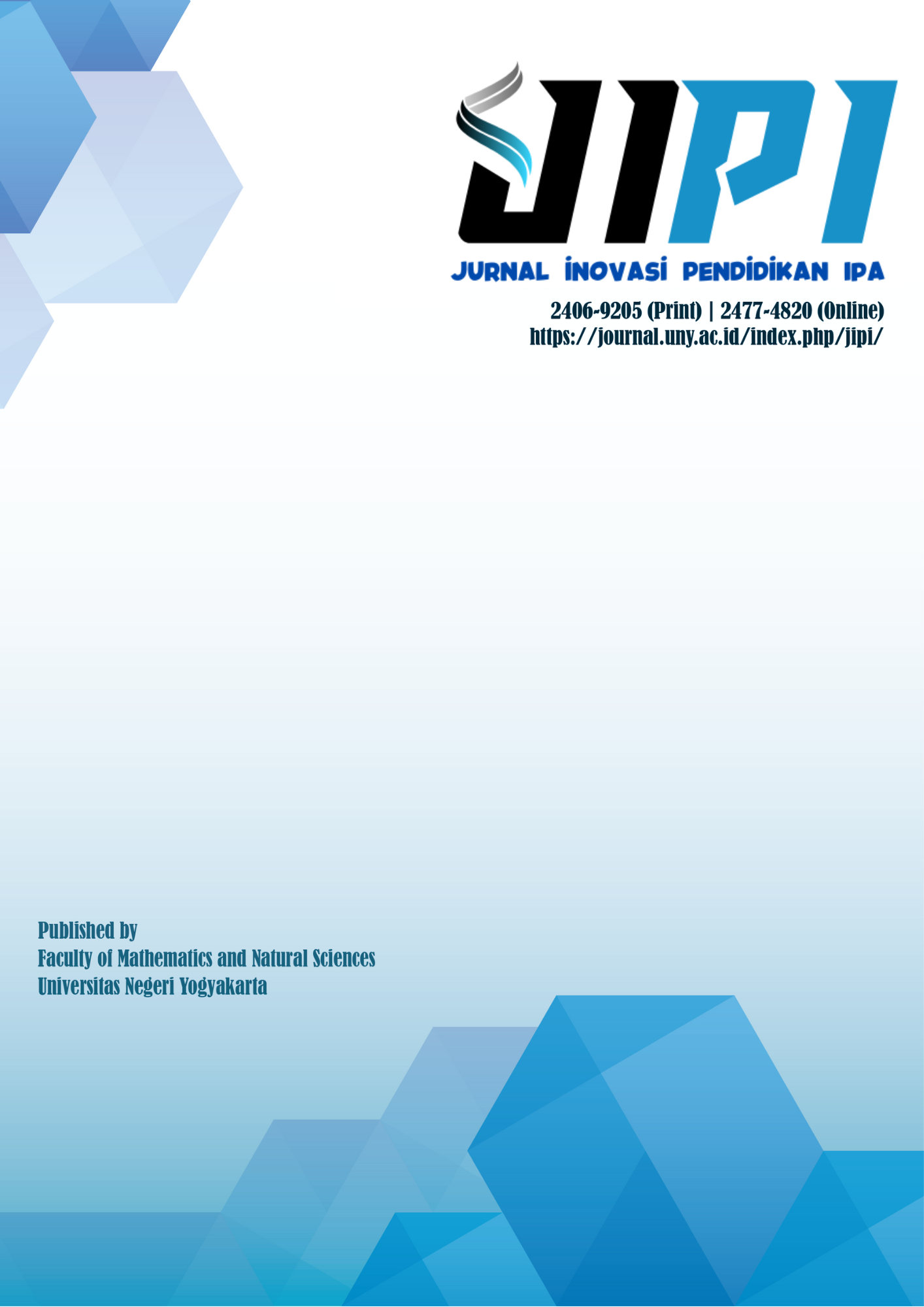PENGEMBANGAN HIGHER ORDER THINKING MULTIPLE CHOICE TEST UNTUK MENGUKUR KETERAMPILAN BERPIKIR KRITIS IPA KELAS VII SMP/MTs
DOI:
https://doi.org/10.21831/jipi.v1i1.4535Keywords:
higher order thinking multiple choice test, critical thinking skill, science in the junior high schoolAbstract
References
Anderson, T.W. & Krathwohl. (2001). A taxonomy for learning, teaching, adn assessing: a revision of bloom's taxonomy of educational objectives, abriged edition. New York: Addison Wesly Longman, Inc.
Balitbang. (2011). Survai internasional TIMSS (versi elektronik). Badan Penelitian dan Pengembangan, Kementerian Pendidikan dan Kebudayaan.
Balitbang. (2011). Survey internasional PISA (versi elektronik). Badan Penelitian dan Pengembangan, Kementerian Pendidikan dan Kebudayaan
Borg & Gall. (1983). Educational research: an introduction (4th ed.). New York: Longman Inc.
Brookhart S.M. (2010). How to asses higher order thinking skills in your classroom. Alexandria: ASCD.
Facione, P. (1990). The APA delphi reportcritical thinking: A statement of expert consensus for the purposes of educational assessment and instruction. California: The California Academic Press
Haladyna, T.M. (1997). Writing test items to evaluate higher order thinking. Boston: Allyn and Bacon.
Hedges, W. D. (1969). Testing and evaluation for science in the seconday school. California: Wadsworth Publishing Company, Inc.
Kneedler, P. (985). California assessess critical thingking. Dalam A.L Costa (Eds.), Developing mids, a resource book for teaching thinking. (pp.276-280). Alexandria: Association for Supervision and Curriculum Development.
Kubiszyn, T., & Borich, G. D. (2002). Educational testing and measurement classroom application and practice (seventh edition.). New York: John Wiley & Sons, Inc.
Liu, F. (2010). Essentials of science classroom assessment. Los Angeles: Sage Publications Ltd.
Lumsdaine, E. & Lumsdaine, M. (1995). Creative problem solving: thinking skill fo a changing world. New York: McGraw-Hill, Inc.
Martin, R., Sexton, C., Franklin, T., & Gerlovich, J., (2005: Teaching science for all student inquiry methods for constructing understanding. Boston: Pearson.
Moore, B. & Standley. (2010). Critical thinking and formative assessment increasing the rigor in your classroom. New York: Eye On Education, Inc.
Ministery of Education Malaysia, (2002). Integrated curriculum for secondary schools curriculum specifications science form 2.
Nitko, A.J. & Brookhart, S.M. (2011). Educational assessment of student 6th. Boston: Pearson Education, Inc.
NRC (1996). National science education standars. Washington: National Academy Press.
OECD. (2011). Against the odds disadvantaged students who succeed school, PISA. OECD Publishing
Presiden Republik Indonesia. (2006b). Peraturan Pemerintah RI Nomor 22 Tahun 2006 tentang Standar Isi.
Sukardjo. (2012). Buku pegangan kuliah evaluasi pembelajaram IPA untuk mahasiswa S2 program studi sains. (tidak diterbitkan) Yogyakarta: Universitas Negeri Yogykarta.
Downloads
Published
How to Cite
Issue
Section
Citation Check
License
The authors submitting a manuscript to this journal agree that, if accepted for publication, copyright publishing of the submission shall be assigned to Jurnal Inovasi Pendidikan IPA (JIPI). However, even though the journal asks for a copyright transfer, the authors retain (or are granted back) significant scholarly rights.
Jurnal Inovasi Pendidikan IPA by http://journal.uny.ac.id/index.php/jipi/index is licensed under a Creative Commons Attribution-ShareAlike 4.0 International License.










